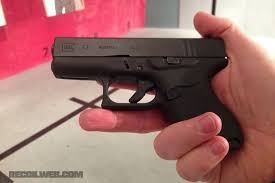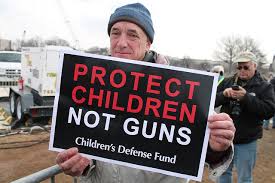Following the October, 2015 mass shooting at Umpqua Community College in Oregon, MoveOn.org announced a petition drive asking gun-owning members of the organization to ‘push for common-sense gun control measures;’ an activity which netted support from more than 32,000 gun-owning MoveOn members within one month. Practically speaking, the petition went nowhere, but at least it demonstrated that not every politically-minded gun guy supports the NRA.
And this is good news for the gun violence prevention (GVP) movement, because it runs counter to the usual assumption that the basic fault line dividing Gun-nut Nation from Gun-sense Nation is the ownership of guns. Not that 32,000 gun-owning MoveOn members compares to the alleged 4 million gun-toters who line up for NRA. But it’s enough of a base to convince other MoveOn members to get involved, which can’t but help grow the strength of the mainline gun-sense organizations like Shannon’s Moms, Everytown, Violence Policy Center, and the Brady Campaign.
I’m not optimistic about the chances of national gun regulations moving forward in the Age of Trump, but if The Donald gets on his high horse and starts ranting about the 2nd Amendment (a subject that has yielded a curious silence from the 26th Floor of since he ended his campaign,) there’s nothing that gets the opposition more worked up than being able to identify a threat from the other side. But if Gun-sense Nation wants to mobilize a wider swath of active supporters, particularly folks who largely sit on the sidelines today, they are going to have to come up with a message that reaches beyond simply reminding people about the number of people killed with guns.
And this is where the activities of public service organizations like MADD and the anti-smoking groups aren’t such a good fit. Because everyone drives a car and everyone knows someone else who smokes. But as an important article published today in The Trace points out, even in cities with high (and increasing) gun-violence rates, like Chicago, Milwaukee and St. Lou, there are many neighborhoods where gun violence remains at historically low levels, and it’s in these more affluent areas, both within the cities and the suburbs, where folks who need to be motivated about gun violence tend to live.
So coming up with a message to which people not directly affected by gun violence will understand is not such a simple or obvious thing. And if the GVP community thinks they can adopt or own a phrase that promotes ‘responsible’ gun ownership, the gun industry itself has been using that exact messaging for over thirty years, and I know they have no interest in sharing idea with the other side. Now I’m not talking about the NRA’s phony Eddie Eagle safety campaign whose effectiveness has never (read: never) been evaluated at all. I’m talking about the gun industry itself and the basic message that has been promoted by the world’s largest manufacturer of small arms – Sturm, Ruger & Co. – for the last thirty years.
Back in the 1980s, America’s most iconic gun designer, Bill Ruger, adopted the slogan ‘Gun Makers For Responsible Citizens’ to go with the unique heraldic eagle logo that had originally been designed by his partner, Alexander Sturm. Ruger considered himself a designer and manufacturer of sporting arms, his first hunting rifle to incorporate military-style engineering, the Mini-14, shipped from the factory with a 5-shot mag. In the run-up to the 1994 assault weapons ban, Ruger endorsed not a gun ban but a ban on hi-cap mags, a stance he then quietly abandoned when talk about a company boycott started to spread around.
In recent years, Sturm, Ruger has moved into promoting small, concealable hi-caliber pistols, a product shift which gives GVP an opportunity to push its own definition of responsible gun ownership focusing not on the behavior of gun owners but on the guns themselves. A 9mm pistol no bigger than a droid simply isn’t a sporting arm. And that’s what causes gun violence – it’s the gun, stupid, it’s the gun.




Recent Comments